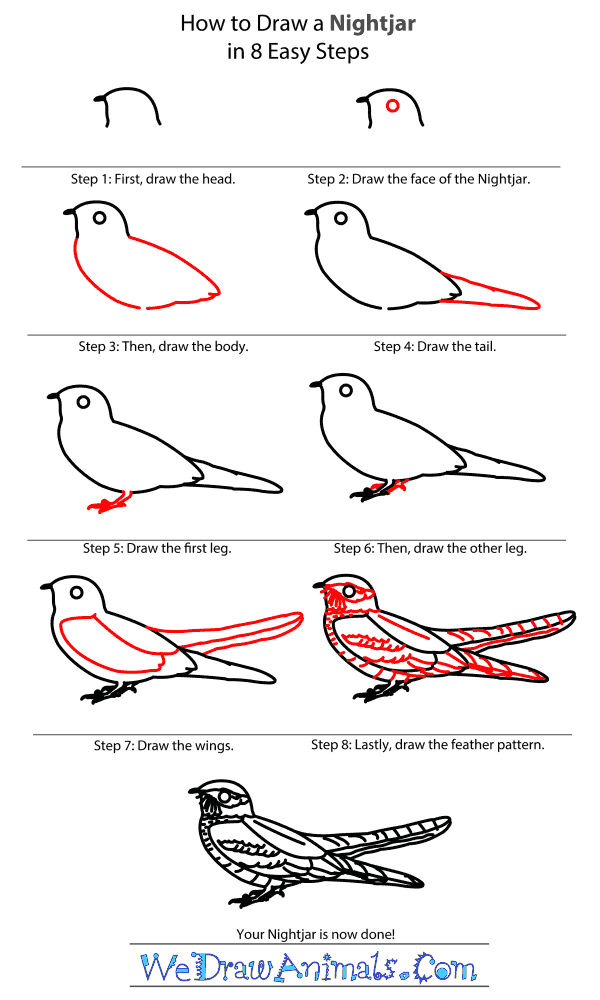In this quick tutorial you'll learn how to draw a Nightjar in 8 easy steps - great for kids and novice artists.
The images above represent how your finished drawing is going to look and the steps involved.
Below are the individual steps - you can click on each one for a High Resolution printable PDF version.
At the bottom you can read some interesting facts about the Nightjar.
Make sure you also check out any of the hundreds of drawing tutorials grouped by category.
How to Draw a Nightjar - Step-by-Step Tutorial
Step 1: Start by drawing the outline of the head and the beak
Step 2: Draw a little circle for the eye
Step 3: Draw the outline of the bird's body. Leave a tiny space for the leg at the bottom
Step 4: Draw the tail by making a long skinny triangle with a rounded point.
Step 5: Draw the front leg and foot. Draw the ends of the toes curving downwards to make claws
Step 6: Now, draw another leg and foot behind the first one in the exact same way
Step 7: Draw the wings and some feathers one section at a time. Draw the two sections on the body, then draw the feather by making three lines that meet in a curve at the end
Step 8: Finish by drawing lots of feathers to create the bird's pattern. Do this by making arched, squiggly, and straight lines all over the face and body.
Interesting Facts about the NIGHTJAR
The Nightjar is a member of the bird family and the scientific term for them is Caprimulgus europaeus. Other common names for this species are the European Nightjar and Eurasian Nightjar. The Greek word Capri, means “nanny goat” and the word mulgus, means “to milk” and refers to an old myth that Nightjars suck milk from goats, which led to a folk song. The species name europaeus, is Latin for “European.”
Did you know?
- The animal was first documented in 1630.
- They can reach up to almost 1 foot in length.
- The bird can have a wingspan of up to almost 2 feet wide.
- This species weighs up to almost 1/4 of a pound.
- They have babies that can hatch in up to 21 days.
- They can sing for up to 10 minutes long.
- The song can be heard up to 2,000 feet away.
- They can breed in environments up to over 16,000 feet.
They are native to Europe and Asia, but migrate to southern Africa. Their colors of brown and grey patches make them camouflaged. Males of this species sing for long durations, and sounds like the Mole Cricket. The females do not make a nest, but instead lay the camouflaged eggs directly on the ground. There is not many of these creatures, but they are the least concern for a possibility of extinction.









